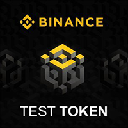-
 Bitcoin
Bitcoin $96,541.6670
1.75% -
 Ethereum
Ethereum $1,812.2721
-0.58% -
 Tether USDt
Tether USDt $1.0003
0.03% -
 XRP
XRP $2.1495
0.53% -
 BNB
BNB $601.8299
0.58% -
 Solana
Solana $146.3240
-0.45% -
 USDC
USDC $0.9999
-0.02% -
 Dogecoin
Dogecoin $0.1714
0.26% -
 Cardano
Cardano $0.6744
1.52% -
 TRON
TRON $0.2457
-1.07% -
 Sui
Sui $3.3434
-2.90% -
 Chainlink
Chainlink $13.7762
0.70% -
 Avalanche
Avalanche $19.9424
1.07% -
 Stellar
Stellar $0.2621
1.14% -
 UNUS SED LEO
UNUS SED LEO $8.7219
0.42% -
 Toncoin
Toncoin $3.0188
1.73% -
 Shiba Inu
Shiba Inu $0.0...01269
-0.23% -
 Hedera
Hedera $0.1767
1.63% -
 Bitcoin Cash
Bitcoin Cash $370.6974
4.78% -
 Hyperliquid
Hyperliquid $20.9271
2.88% -
 Litecoin
Litecoin $89.1769
6.47% -
 Polkadot
Polkadot $3.9480
0.61% -
 Dai
Dai $1.0001
0.01% -
 Monero
Monero $286.9816
3.18% -
 Bitget Token
Bitget Token $4.3091
0.19% -
 Ethena USDe
Ethena USDe $1.0005
0.01% -
 Pi
Pi $0.5802
-1.40% -
 Pepe
Pepe $0.0...07971
0.22% -
 Bittensor
Bittensor $372.8693
-0.76% -
 Uniswap
Uniswap $4.9436
-0.86%
Ethereum wallet usage tutorial
Understanding the intricacies of Ethereum wallets is paramount for safeguarding digital assets and ensuring seamless transactions within the cryptocurrency realm.
Feb 15, 2025 at 06:42 am

Ethereum Wallet Usage Tutorial: A Comprehensive Guide for Beginners
Navigating the realm of cryptocurrency can be daunting, especially when it comes to managing your digital assets. Understanding how to properly use an Ethereum wallet is crucial to safeguard your funds and ensure seamless transactions. This comprehensive guide will delve into the essential steps, addressing potential questions and doubts you may encounter along the way.
Key Points:
- Understanding Ethereum and Its Wallets
- Choosing the Right Ethereum Wallet
- Setting Up Your Ethereum Wallet
- Sending and Receiving Ethereum
- Managing Your Ethereum Wallet Security
- Using Advanced Wallet Features (Optional)
- Troubleshooting Common Wallet Issues
Step 1: Understanding Ethereum and Its Wallets
Ethereum is a decentralized blockchain platform that allows developers to build and deploy decentralized applications (dApps) and smart contracts. Ethereum wallets are digital tools that enable users to store, send, and receive ETH and ERC-20 tokens built on the Ethereum network.
There are two primary types of Ethereum wallets:
- Hardware Wallets: Physical devices designed to provide the highest level of security for storing private keys offline.
- Software Wallets: Digital applications or browser extensions that allow users to access their wallets from multiple devices.
Step 2: Choosing the Right Ethereum Wallet
Selecting an Ethereum wallet depends on your individual needs and preferences. Consider the following factors:
- Security: Hardware wallets offer the strongest security, while software wallets may provide more convenience.
- Functionality: Software wallets typically offer a wider range of features, such as dApp integration and token management.
- Compatibility: Ensure the wallet is compatible with your operating system and the devices you intend to use.
Step 3: Setting Up Your Ethereum Wallet
Once you have chosen a wallet, follow these general steps to set it up:
- Software Wallets: Download the wallet application or browser extension, create an account, and generate a private key.
- Hardware Wallets: Connect the device to your computer, create an account, and back up your recovery seed.
Step 4: Sending and Receiving Ethereum
To send Ethereum from your wallet:
- Open the wallet and navigate to the 'Send' or 'Transfer' section.
- Enter the recipient's address and the amount you wish to send.
- Review the details and confirm the transaction.
- Pay the required transaction fee.
To receive Ethereum:
- Provide your Ethereum address to the sender.
- Ensure the sender initiates the transaction from their wallet.
- Once the transaction is processed, the Ethereum will appear in your wallet.
Step 5: Managing Your Ethereum Wallet Security
Secure your Ethereum wallet by following these best practices:
- Strong Passwords: Use complex passwords and enable two-factor authentication (2FA) where available.
- Secure Private Keys: Never share your private key or save it online. Consider using a hardware wallet for offline storage.
- Vigilance: Monitor your wallet for suspicious activity and report any irregularities to the wallet provider.
Step 6: Using Advanced Wallet Features (Optional)
Many Ethereum wallets offer advanced features, such as:
- dApp Integration: Connect to dApps and interact with smart contracts directly from your wallet.
- Token Management: Store, send, and receive ERC-20 tokens without switching platforms.
- Advanced Security Measures: Fingerprint or face recognition for additional layers of protection.
Step 7: Troubleshooting Common Wallet Issues
Common wallet issues include:
- Transaction Errors: Check if the fees are sufficient, the recipient's address is correct, and the wallet is connected to the Ethereum network.
- Lost Private Keys: If you have lost your private key, contact your wallet provider to see if a recovery option is available.
- Security Breaches: Report any suspicious activity to your wallet provider and secure your funds on another wallet.
FAQs:
- What is the safest way to store Ethereum?
Hardware wallets are the safest method for storing Ethereum due to their offline nature.
- Can I use multiple Ethereum wallets?
Yes, you can create multiple Ethereum wallets for different purposes, such as holding funds or interacting with dApps.
- How do I recover my Ethereum if I lose my private key?
You may be able to recover your funds if you have backed up your recovery seed (for hardware wallets) or used a wallet provider with a recovery option.
- What are the best software wallets for Ethereum?
Popular software wallets for Ethereum include MetaMask, Coinbase Wallet, and Trust Wallet.
- What are the best hardware wallets for Ethereum?
Recommended hardware wallets for Ethereum include Ledger Nano X, Trezor Model T, and SafePal S1.
Disclaimer:info@kdj.com
The information provided is not trading advice. kdj.com does not assume any responsibility for any investments made based on the information provided in this article. Cryptocurrencies are highly volatile and it is highly recommended that you invest with caution after thorough research!
If you believe that the content used on this website infringes your copyright, please contact us immediately (info@kdj.com) and we will delete it promptly.
- Dragoin (DDGN) 6,700% ROI From Presale, Game Rollout Makes It the Top Crypto Right Now
- 2025-05-07 07:35:12
- Solana Dominates Blockchain Activity With 24M Active Addresses
- 2025-05-07 07:35:12
- Bitcoin (BTC) Dominance Surges to 4-Year High
- 2025-05-07 07:30:12
- Gold (XAU) price gained nearly 3 percent in the past 24 hours to trade at about $3424 per ounce on Tuesday, May 6
- 2025-05-07 07:30:12
- Recently, on-chain indicators have identified three tokens, Dogecoin (DOGE), HyperLiquid (HYPE) and FloppyPepe (FPPE), as assets with the potential to hit the $100 billion market cap in the coming bull market.
- 2025-05-07 07:25:12
- Pi Network Surges, SUI Reaches $3.7, Yet Unstaked's $0.006695 Entry May Deliver the Biggest Gains!
- 2025-05-07 07:25:12
Related knowledge
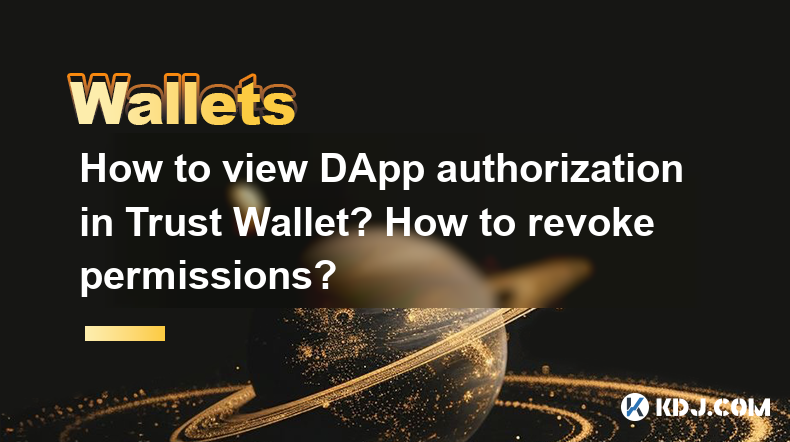
How to view DApp authorization in Trust Wallet? How to revoke permissions?
May 06,2025 at 06:56pm
Managing DApp authorizations in Trust Wallet is crucial for maintaining the security of your cryptocurrency assets. Trust Wallet, a popular mobile wallet, allows users to interact with decentralized applications (DApps) directly from their mobile devices. However, it's important to keep track of which DApps have been granted access to your wallet and to...
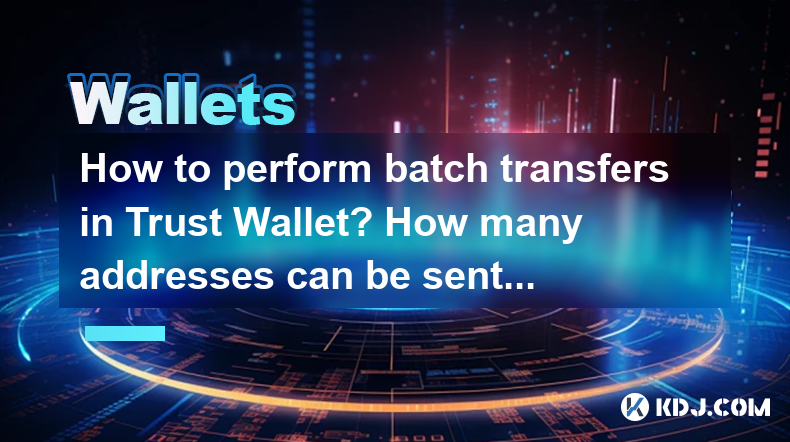
How to perform batch transfers in Trust Wallet? How many addresses can be sent at one time?
May 07,2025 at 05:07am
How to Perform Batch Transfers in Trust Wallet? How Many Addresses Can Be Sent at One Time? Trust Wallet is a popular mobile cryptocurrency wallet that supports a wide range of digital assets. One of its useful features is the ability to perform batch transfers, which allows users to send cryptocurrencies to multiple addresses in a single transaction. T...
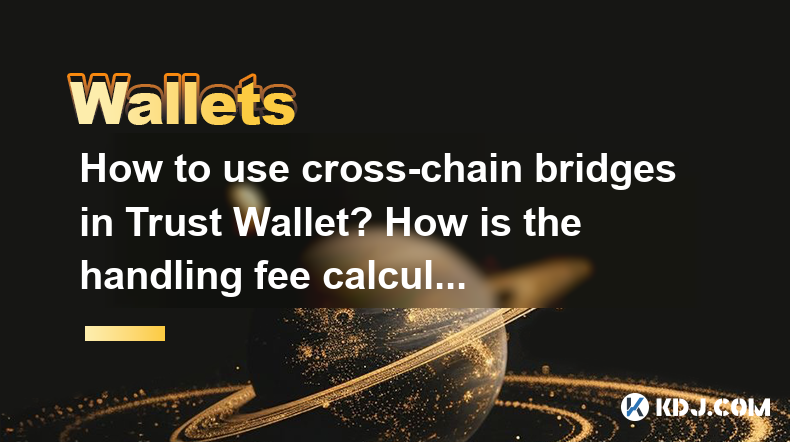
How to use cross-chain bridges in Trust Wallet? How is the handling fee calculated?
May 07,2025 at 02:36am
Using cross-chain bridges in Trust Wallet allows you to transfer assets between different blockchain networks seamlessly. This process can be crucial for users who want to leverage the benefits of various blockchains, such as Ethereum, Binance Smart Chain, and others. In this article, we will guide you through the steps to use cross-chain bridges in Tru...
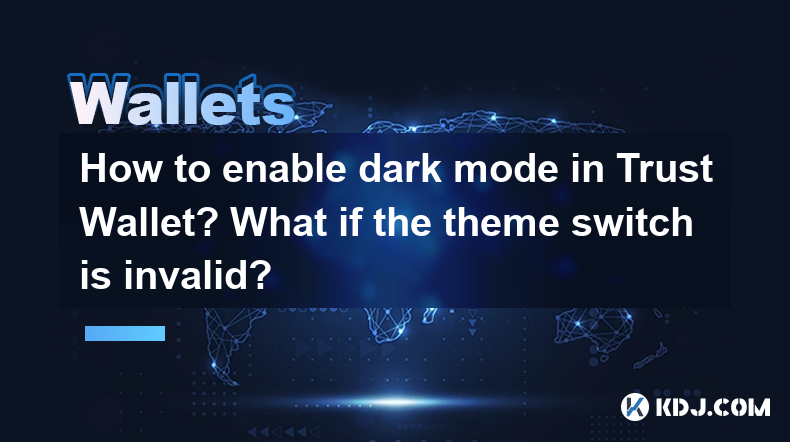
How to enable dark mode in Trust Wallet? What if the theme switch is invalid?
May 06,2025 at 10:07pm
Enabling dark mode in Trust Wallet can significantly enhance your user experience by reducing eye strain and making the interface more comfortable to use in low-light environments. This guide will walk you through the steps to enable dark mode and troubleshoot if the theme switch is invalid. Checking for Dark Mode AvailabilityBefore attempting to enable...
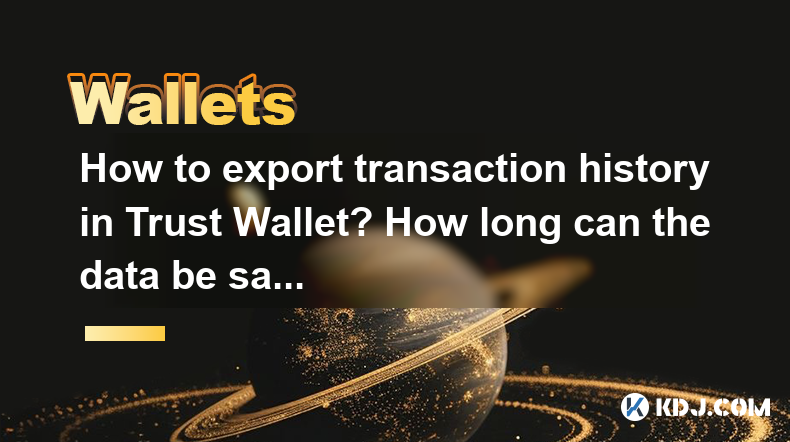
How to export transaction history in Trust Wallet? How long can the data be saved?
May 07,2025 at 12:28am
Exporting transaction history from Trust Wallet is a straightforward process that allows users to maintain a record of their cryptocurrency transactions. This guide will walk you through the steps to export your transaction history and provide information on how long the data can be saved. Accessing the Transaction HistoryTo begin the process of exporti...
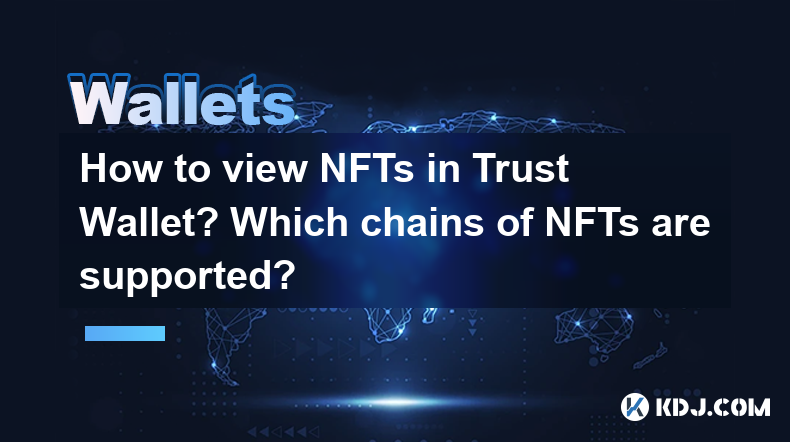
How to view NFTs in Trust Wallet? Which chains of NFTs are supported?
May 06,2025 at 05:28pm
How to View NFTs in Trust Wallet? Which Chains of NFTs Are Supported? Trust Wallet is a popular mobile cryptocurrency wallet that supports a wide range of digital assets, including Non-Fungible Tokens (NFTs). Viewing your NFTs in Trust Wallet is a straightforward process, and the wallet supports NFTs from various blockchain networks. In this article, we...

How to view DApp authorization in Trust Wallet? How to revoke permissions?
May 06,2025 at 06:56pm
Managing DApp authorizations in Trust Wallet is crucial for maintaining the security of your cryptocurrency assets. Trust Wallet, a popular mobile wallet, allows users to interact with decentralized applications (DApps) directly from their mobile devices. However, it's important to keep track of which DApps have been granted access to your wallet and to...

How to perform batch transfers in Trust Wallet? How many addresses can be sent at one time?
May 07,2025 at 05:07am
How to Perform Batch Transfers in Trust Wallet? How Many Addresses Can Be Sent at One Time? Trust Wallet is a popular mobile cryptocurrency wallet that supports a wide range of digital assets. One of its useful features is the ability to perform batch transfers, which allows users to send cryptocurrencies to multiple addresses in a single transaction. T...

How to use cross-chain bridges in Trust Wallet? How is the handling fee calculated?
May 07,2025 at 02:36am
Using cross-chain bridges in Trust Wallet allows you to transfer assets between different blockchain networks seamlessly. This process can be crucial for users who want to leverage the benefits of various blockchains, such as Ethereum, Binance Smart Chain, and others. In this article, we will guide you through the steps to use cross-chain bridges in Tru...

How to enable dark mode in Trust Wallet? What if the theme switch is invalid?
May 06,2025 at 10:07pm
Enabling dark mode in Trust Wallet can significantly enhance your user experience by reducing eye strain and making the interface more comfortable to use in low-light environments. This guide will walk you through the steps to enable dark mode and troubleshoot if the theme switch is invalid. Checking for Dark Mode AvailabilityBefore attempting to enable...

How to export transaction history in Trust Wallet? How long can the data be saved?
May 07,2025 at 12:28am
Exporting transaction history from Trust Wallet is a straightforward process that allows users to maintain a record of their cryptocurrency transactions. This guide will walk you through the steps to export your transaction history and provide information on how long the data can be saved. Accessing the Transaction HistoryTo begin the process of exporti...

How to view NFTs in Trust Wallet? Which chains of NFTs are supported?
May 06,2025 at 05:28pm
How to View NFTs in Trust Wallet? Which Chains of NFTs Are Supported? Trust Wallet is a popular mobile cryptocurrency wallet that supports a wide range of digital assets, including Non-Fungible Tokens (NFTs). Viewing your NFTs in Trust Wallet is a straightforward process, and the wallet supports NFTs from various blockchain networks. In this article, we...
See all articles
















































































